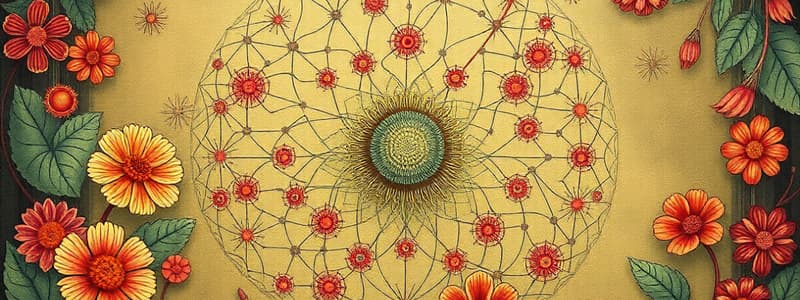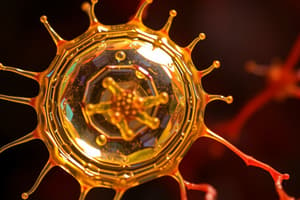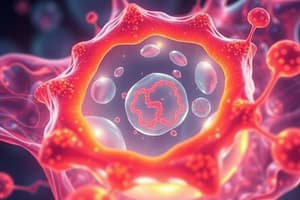Podcast
Questions and Answers
How old is Earth?
How old is Earth?
4.5 billion years old
What do atoms combine to form?
What do atoms combine to form?
molecules
A group of organisms of the same species living in a given area is called what?
A group of organisms of the same species living in a given area is called what?
population
What do we call organisms of the same type that are capable of interbreeding?
What do we call organisms of the same type that are capable of interbreeding?
What is 'the quality that distinguishes a vital and functioning being from a dead body'?
What is 'the quality that distinguishes a vital and functioning being from a dead body'?
What is the name given to 'the cell is the basic unit of life'?
What is the name given to 'the cell is the basic unit of life'?
What do we call organisms that maintain relatively constant internal conditions?
What do we call organisms that maintain relatively constant internal conditions?
What is the sum total of all the chemical reactions needed to sustain an organism's life called?
What is the sum total of all the chemical reactions needed to sustain an organism's life called?
What process allows plants and some single-celled organisms to capture sunlight?
What process allows plants and some single-celled organisms to capture sunlight?
What is a membrane-enclosed sac containing the cell's genetic material called?
What is a membrane-enclosed sac containing the cell's genetic material called?
What does eukaryotic mean in Greek?
What does eukaryotic mean in Greek?
What does prokaryotic mean in Greek?
What does prokaryotic mean in Greek?
Flashcards are hidden until you start studying
Study Notes
Earth and Time
- Earth is approximately 4.5 billion years old, marking its long history in the solar system.
Basic Biological Units
- Atoms combine to create molecules, which are the building blocks of matter.
- A population consists of a group of organisms from the same species inhabiting a specific area.
- A species is defined as organisms of the same type capable of interbreeding.
Definition and Concepts of Life
- Life is characterized by the distinction between living organisms and dead matter, highlighting the essence of being alive.
- The Cell Theory posits that the cell is the fundamental unit of life, establishing the importance of cellular structure and function.
Homeostasis and Metabolism
- Homeostasis refers to the ability of organisms to maintain stable internal conditions despite external changes.
- Metabolism encompasses all chemical reactions necessary for sustaining an organism's life, including energy production and waste elimination.
Photosynthesis
- Photosynthesis is a process utilized by plants and certain single-celled organisms to capture sunlight, converting it into energy.
Cellular Structures
- The nucleus is a membrane-bound sac within a cell that houses the genetic material, crucial for cellular functions and heredity.
Eukaryotic and Prokaryotic Cells
- The term "eukaryotic" translates from Greek as "true nucleus," signifying cells with a defined nucleus.
- "Prokaryotic" means "before the nucleus," indicating a simpler cell structure without a true nucleus.
Studying That Suits You
Use AI to generate personalized quizzes and flashcards to suit your learning preferences.




